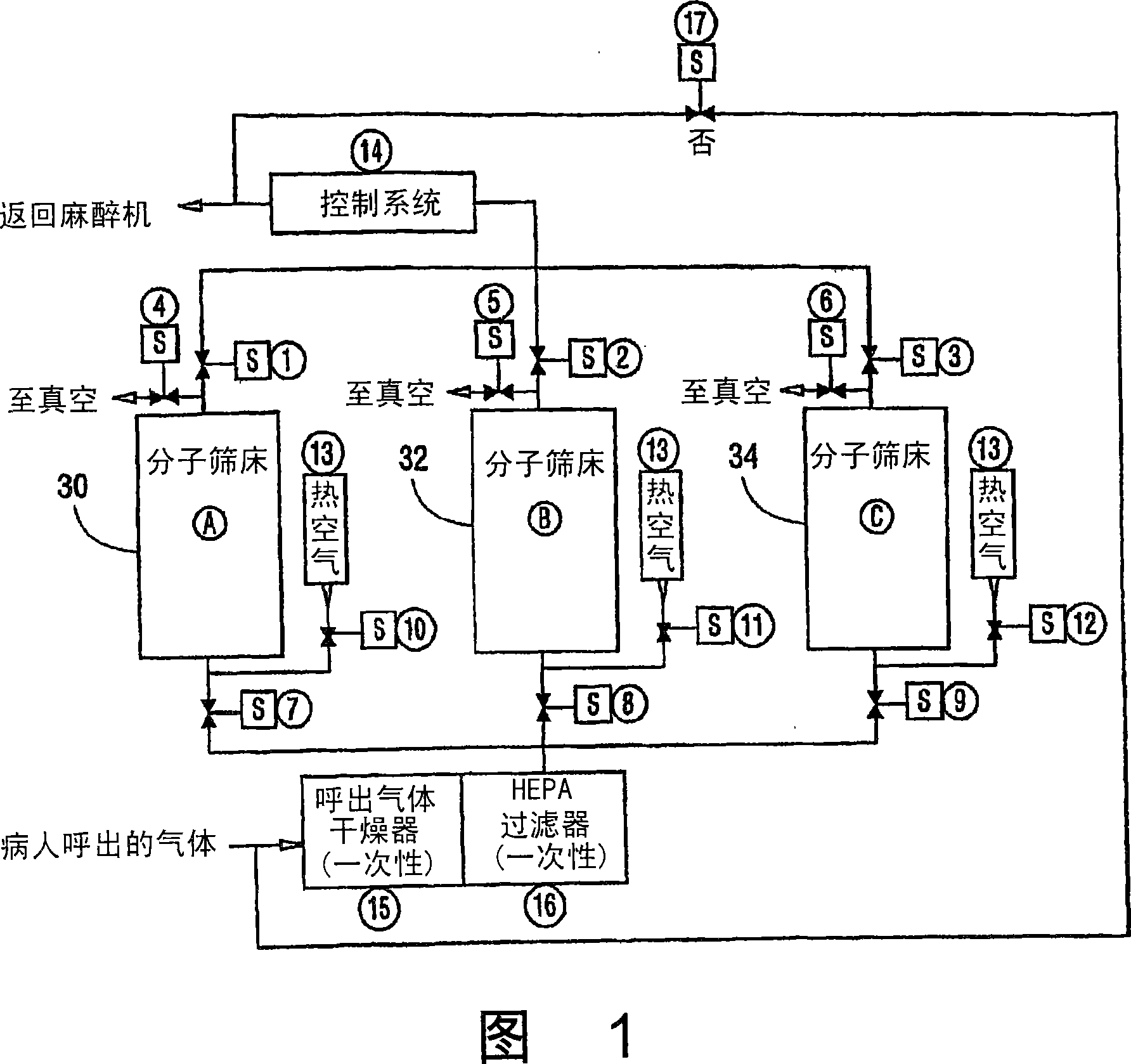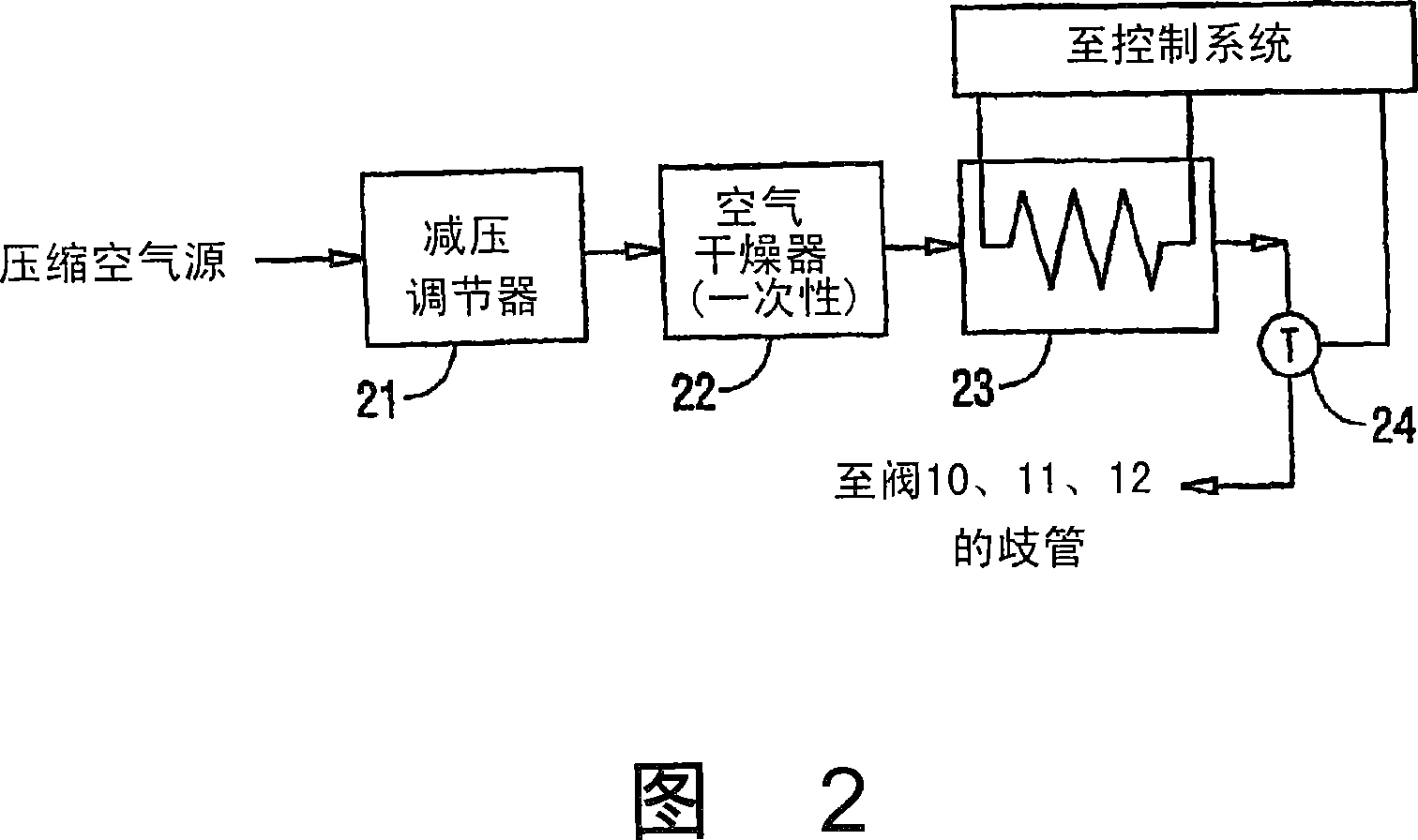Removal of carbon dioxide and carbon monoxide from patient expired gas during anesthesia
一种一氧化碳、二氧化碳的技术,应用在呼吸器、药物的器械、吸入器等方向,能够解决不能有效除去一氧化碳等问题
- Summary
- Abstract
- Description
- Claims
- Application Information
AI Technical Summary
Problems solved by technology
Method used
Image
Examples
Embodiment Construction
[0013] The present invention provides methods and systems for the use of molecular sieves for the removal of carbon dioxide and carbon monoxide from a patient's exhaled air during anesthesia. The system and method are particularly useful for anesthesia using various halogenated ether inhalational anesthetics. Exhaled air is dried with a non-reactive desiccant to remove moisture, passed through a filter capable of removing particles larger than 3 microns, passed through a bed of natural or synthetic molecular sieves capable of removing carbon dioxide and carbon monoxide, and returned to the breathing circuit for reinfusion to the patient.
[0014] Key Points of Figure 1
[0015] Figure 1 shows the system of the present invention, which has the following components:
[0016] A, B, C are suitable vessels containing molecular sieves capable of selectively removing carbon dioxide and carbon monoxide from the mixed gas stream, also designated 30, 32 and 34. Molecular sieve models ...
PUM
 Login to View More
Login to View More Abstract
Description
Claims
Application Information
 Login to View More
Login to View More - R&D
- Intellectual Property
- Life Sciences
- Materials
- Tech Scout
- Unparalleled Data Quality
- Higher Quality Content
- 60% Fewer Hallucinations
Browse by: Latest US Patents, China's latest patents, Technical Efficacy Thesaurus, Application Domain, Technology Topic, Popular Technical Reports.
© 2025 PatSnap. All rights reserved.Legal|Privacy policy|Modern Slavery Act Transparency Statement|Sitemap|About US| Contact US: help@patsnap.com



